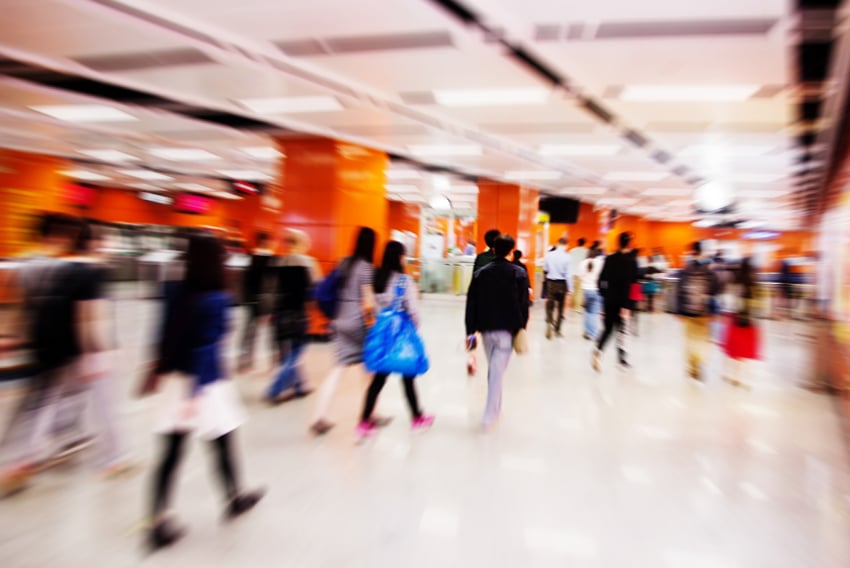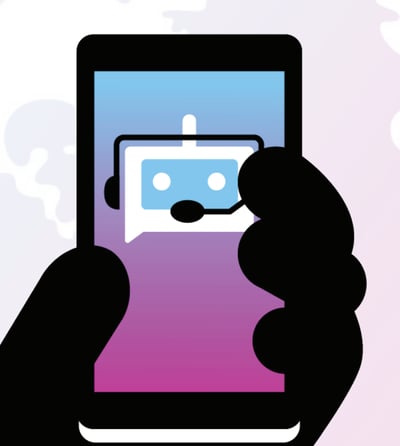Changing Consumer Expectations: 10 Trends You Need to Know
While the essential principles of customer service are timeless, consumer expectations are not. Customers have always wanted friendly, efficient, and reliable service, but factors like the pandemic, changing behaviors, and new technology have raised these expectations even higher.

What Are Customer Expectations (Today)?
The definition of "customer expectations" effectively boils down to the actions or behaviors that customers anticipate when they interact with a business. Historically, customers expected quality service at a fair price. Today, however, customers’ expectations are far higher.
Customers want friendly and efficient service. And not just friendly — it should feel like the service has been personalized for them. And they want connected experiences across multiple digital channels.
The adage "know your customers" is still as true today as it ever was, and with consumer behavior changing rapidly, businesses need to stay apprised and aware of customer experience and customer expectation trends.
What these expectations? Some examples...
Customers today expect a lot from the companies they do business with, and those expectations can cover a wide range of factors and touchpoints, including:
Fast and easy resolutions to their complaints or issues
Access to brands via their preferred service channels
Opportunities to answer questions themselves via self-help options
Personalized, engaging experiences
Data protection and privacy
With this in mind, let’s take a look at 10 trends that are changing (and often raising) consumer expectations in 2022. (And be sure to check back in the future — we’ll update these trends for coming years.)
Our Top 10 Customer Expectation Trends
1. Social Media Has Changed the Definition of 'Fast'
We're each connected to an instant feed of live updates, breaking news, and messages. We can post something on social media and get instant feedback from friends. According to Datareportal's Digital 2022: April Global Snapshot, nearly 60% of the world population now uses social media, and they spend an average of 2.5 hours each day immersed in it.
Social networks are playing an increasingly important role in people's brand research behaviors, too — social channels are now second only to search engines. This has effectively sped up the time consumers expect it to take a brand (or anyone) to reply to a message. Additionally, according to Zendesk, 64% of customers say they tried a new channel like live chat to engage with brands during the pandemic, and 75% plan to keep using it.
2. Technology Has Heightened Customer Service Expectations
A quick Google search can tell you just about anything you need to know. As a result, consumers have little patience when companies simply don't know something.
Consumers expect data to be at companies' fingertips — from accurate stock information to delivery dates to customer records. And with this wealth of data and the technology to support it, consumers often feel like there's no excuse for getting it wrong.
3. Self-Service Options Have Created Self-Sufficient Consumers
From self-checkouts to FAQ pages and call center IVR, consumers are more willing than before to try to solve their problems themselves.
This doesn't mean that they no longer want to call and talk to a real person, but it does mean that through clever use of self-service tactics, contact centers can save time and money.
4. Our 'Always On' Culture Runs on 24/7 Service
We live in an age where virtually everyone has a smartphone in their pockets, connecting them to just about every aspect of their lives.
This is a device that's always on and always connected. We've grown used to being able to find the information we need, contact whomever we want, and even listen to whatever music we'd like, whatever time of day.
Consumers don't expect to have to break this habit for a business. While 24/7 contact centers may not be possible, 24/7 chatbots are. Customer service expectations involve longer opening hours and weekend support as well.
5. With Ecommerce the Norm, Customers Now Expect Quick, Free Shipping
When ecommerce began, delivery costs were standard. It was part of the deal for online shopping.
Now that online service is mainstream, it seems wrong to pay for something like delivery — consumers now want free, even next-day delivery as standard.
 GLOBAL RESEARCH STUDY
GLOBAL RESEARCH STUDY
6. Channel-Hopping Customers Expect Omnichannel Service
Customers see a brand, not a particular department. They can't understand why a contact center agent can't remember a Twitter conversation they had with the brand the day before.
This is important because consumers are engaging brands on multiple channels. According to Vonage's Global Customer Engagement Report 2021, the pandemic drove increases in the use of virtually every digital channel, and 87% of consumers say they will maintain or increase that usage moving forward.
As consumers move between channels, they should receive a consistent service, and the omnichannel customer experience should feel like one big, ongoing conversation.
7. Influencers Have Empowered Customers
Social media has made it easier than ever before for consumers to share their thoughts with a wide audience. There are even some shoppers who have a larger social following than brands.
In 2022, companies have to tackle an audience that has its own audience. Get it right, and the message could spread like wildfire; get it wrong, and it's a PR disaster.
All of this has led to many consumers feeling more empowered. They know if they complain publicly on social media, they're likely to get a better response than if they complain privately.
8. Consumers Demand Personalized Service
The whole online experience is now personalized, from social media to the way Google personalizes our search results. It only makes sense for customer service to be personalized, too.
Consumers expect you to remember them — they each expect to be treated as an individual and not as just another customer. Your agents need to have access to their whole communication history, their buying habits, and their preferences.
9. Customers Expect a Mobile-Friendly Experience
Mobile technology has changed the way we all live our lives. It connects us to people, brands, and information — all of the time.
All aspects of your customer experience should therefore be mobile-friendly, from your website to your customer service. Mobile shopping and service are no longer extras but necessities.
10. Customers Expect Businesses to Engage Them on Social Channels
With social media, everything is out there in the open. This "open book" approach to socializing has led to an expectation that brands should be monitoring any mentions on social media and responding accordingly.
Whether this is a direct complaint or message or just a mention, consumers expect brands to be listening and ready to respond in this social world.
Building Communications to Meet Customer Needs and Expectations
Changes in technology and in consumer tastes can cause challenges for business — but also create great opportunities. Consumers may expect more from brands than they did before, but with the right technology, there's no reason why any business can't meet (and exceed) customer expectations.
If your business capitalizes on these customer experience trends, you stand to see solid rewards. Learn more about how Vonage Business Communications can help you to connect with your customers.
